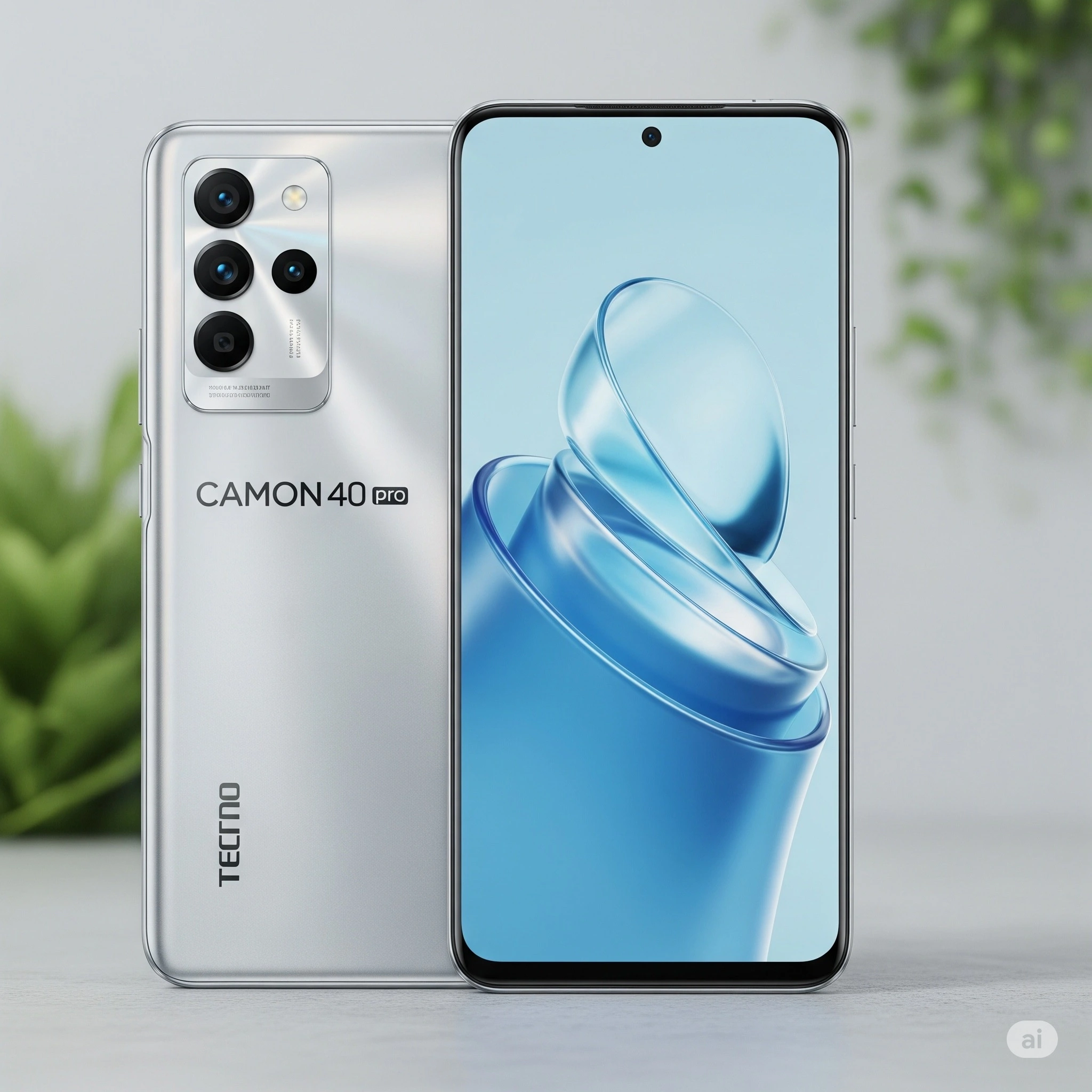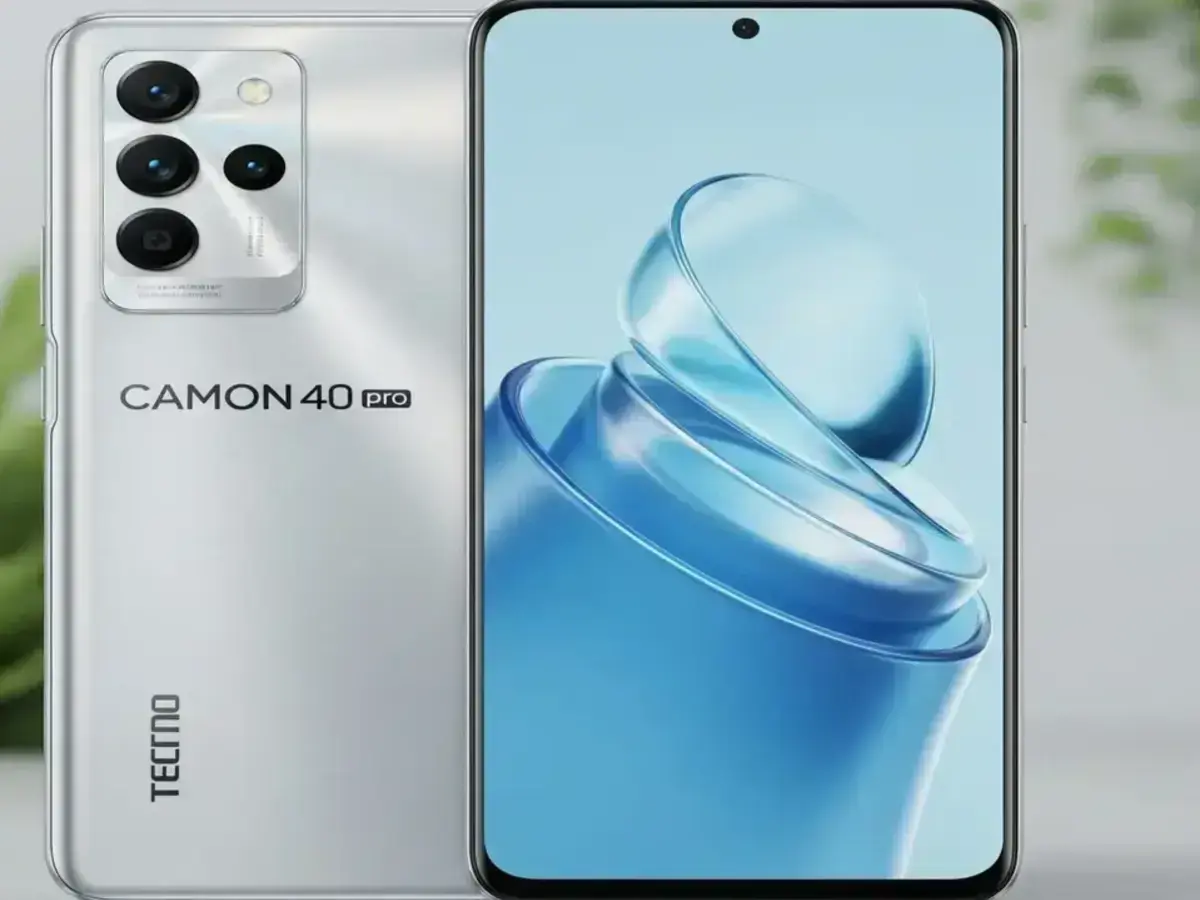Tecno Camon 40 Pro: the hardware is much more dynamic across different tiers. So, you may be wondering, how does the Technoc 40 Premier differ from the others? When you unbox the Camera 40 Pro, you’ll see the phone in a protective wrap. It has all the specs on it. The next thing you get is a silver compartment that is hiding the phone’s case and a year-plus warranty. Right after that, you see the 70-watt power

Display:
The Common 40 Premier features a 6.67 in AMOLED display, which is slightly shorter than the 6.75 in display on the Common 40 Pro.
Additionally, there’s a minor difference in the bezel. The K40 Pro has a curved screen, resulting in a more noticeable bezel at the top and the bottom, while the bezels on the sides are less visible. The K40 Pro, in contrast to the K Premier, has slightly symmetrical bezels around the entire screen, and the bezel is clearly visible.
It has a 1080*2436 px (FHD+) resolution and a 144 Hz refresh rate, which gives an amazing experience. and its pixel density is 393 ppi, which shows exclusive graphics. This brightness level ensures that whatever you’re doing, whatever you’re looking at on your screen, appears vivid and true to the original color.
Whether you’re watching movies, whether you’re playing games, or you’re doing anything on the phone, like the 40 Pro, the 40 Premier also features an in-display fingerprint scanner
Camera:
They’re offering three cameras on the rear side as well as a selfie camera at 50 megapixels. Plus, you know, Techno, they’ve collaborated with Sony to incorporate their sensors into the camera.
But how do they really perform? Well, the photos that we got here from the Common 40 premiere give quite interesting results. While the photos that we got from the normal 1x camera were decent, it seemed to struggle with consistency. Sometimes the photos came out perfect, while sometimes the photos seemed to struggle with clarity. But then when you switch it to the 3x camera, it’s a whole new world.
The photos that we captured with the 3x camera looked consistently great. The details, skin tone, and exposure all fell perfectly in line. But then when you switch to portrait mode, the portrait mode offers you the option of using 24 mm, 35 mm, 50 mm, or 70 mm. And based on our test, the 24 mm produced the best results consistently. It seemed like higher focal lengths struggled with giving consistent results when it comes to the portrait mode side of the equation. Again, videos at 1080p are decent and sharp.
If you want to get the best out of it, you have to get good lighting. And one thing that stood out to me here is that there were two levels of stabilization on the camera 40 premium. You have the regular Ultra Steady that can shoot at 4K 60 fps per second and the Ultra Steady Pro that is restricted to 1080p at 60 frames per second. And here’s how the footage looks side by side.
And while we’re on the topic of standout features, we have to talk about the Flash Snap camera option. This is an automatic function that helps you capture high-quality images during motion. Effectively, it’s eliminating motion blur and awkward angles. And I also like how automatically it detects motion and starts taking a picture
Battery:
The phone is equipped with a 5,100 mAh battery, and it includes a 70W charger for free. I say for free because many phones don’t come with chargers these days. Overall, the battery performs well during use, though it may need to be charged at the end of the day with intensive and heavy use.
This shouldn’t be a problem, though, as the phone took 55 minutes to charge from zero to 100% during our charging test. It is around 10 minutes faster than the Pro version. This is our full charging test.
Processor:
The K40 Premier is powered by a MediaTek Dimensity 8350 Ultimate processor, which is a higher model than the one found on the Pro version. While the Pro only supports 4G connectivity, the 40 Premier can go up to 5G in network speeds. And gaming on this device is enjoyable.
We played Call of Duty and Free Fire alongside several other games. The performance was smooth throughout. The graphics were impressive with almost no lag. Overall, you will really enjoy playing games on this device.
Now, Techno claims this device offers superior cooling during gameplay. And after playing for about an hour, we noticed the performance. Yeah, it did remain smooth and uninterrupted, but it did get a little warm to the touch after extended periods of gaming. So, thanks to the powerful processor, the 40 Premier can handle more tasks and more demanding tasks compared to the Pro model, at least
Design:
the Premier’s rounded edges and the flatter metallic look that the Pro has and the curved screen that the Pro has. Also, the flash and red light indicator placement differs. This one is on the left side of the camera module, and this one is on the right side of the camera module, the camera group.
. Also, I really like the red blinking recording dot here. And on the Premiere, it feels even more premium. It has a glass covering versus this one that just feels really plain. But there you have it. Like, those are some of the differences in terms of button and port placement.
They remain standard. You have the flash snap button on the left side of the phone and the power button and volume buttons on the right side. You have an IR blaster, Dolby Atmos inscription, and speaker microphone on the top, and on the bottom, the SIM slot, the microphone, the USB Type-C port, and the speaker grill.
Overall, the Common 40 Pro blends that elegant look with a bold choice of design and aesthetic, and I think it’s really cool. One of the major similarities between the two phones is their durability. They both feature an IP68/69 water- and dust-resistant rating.

